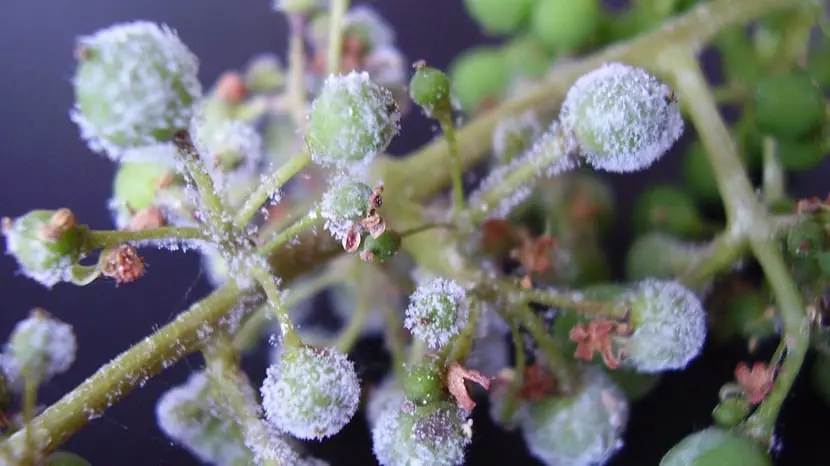As we have seen on certain occasions, plants can suffer from diseases, viruses, pests, etc. To prevent our plants from suffering, there are numerous prevention mechanisms and if, inevitably, they have already been infected, we can solve them.
Today I come to talk to you about the mildew of the vine . About what it is, how we can prevent it, the symptoms that we can notice and some treatments. Do you want to know more about it?
Index
- 1 What is vine downy mildew?
- 2 Perfect environmental conditions for the fungus and symptoms
- 3 What can we do to treat it?
What is vine downy mildew?

It is one of the most well-known diseases in viticulture . It is well known for its frequency and severity. It is a disease that depends on environmental conditions and, if in its favour, is capable of attacking all the green organs of the vineyard plant, causing a huge loss in grape production.
It is a fungus that begins its activity in spring when the environmental conditions are more favorable and it can spread better thanks to the higher temperatures. This fungus, like almost all of them, depends almost entirely on ambient humidity, so in autumn, with drops in temperature, it goes into a resting phase and does not attack the vine.
Perfect environmental conditions for the fungus and symptoms

When we have a vine crop, we have to take into account that there are no favorable conditions for Mildew to attack our plantation. In addition, in the event that it manages to attack our crop, we must know the symptoms to act as quickly as possible and alleviate the problems.
The most favorable environmental conditions for Mildew to spread and act are:
- Shoot length 10 cm or more.
- Rain fall of 10 mm minimum.
- Average temperature above 10ºC.
We know that spring is a time when plants sprout and bloom more quickly. In addition, there are more abundant and frequent rains with higher temperatures. All this means that the conditions for this fungus to reproduce and attack our crops are ideal.
How do we know if our vine crop has been affected by Mildew? The first thing is to look at the leaves. The leaves that are affected by Mildiu can be recognized by some oil stains on the upper side, which can correspond to a whitish fuzz on the underside.
We can also recognize other symptoms of Mildiu in the shoots and shoots. We have to see how the shoots curve and are also covered with the whitish fuzz that the leaves do. If the fungus is too strong, the shoots can fall off.
As for the bunches, the grains can be affected both initially and later. In slower attacks the clusters are not covered with the fluff, but they do acquire a browner color. This may be an indicator that our vine is affected by mildew.
What can we do to treat it?

Before putting a solution, we have to put prevention. If we find ourselves in spring where the disease develops and the conditions that I have mentioned above occur, the best option is to carry out a preventive treatment. To do this, we have to take into account that the conditions in which this fungus spreads are based on high temperature and high humidity. Relative humidity above 75% and temperatures between 12 and 30 degrees are ideal , as they increase their survival by 25%.
Therefore, we have to take measures that make the temperatures and humidity not so favorable for Mildiu. Among the actions that we can carry out we find:
- Place the plantation always in the direction of the prevailing wind. In this way we will avoid excess humidity and favor natural aeration.
- We will thin out the leaves that are affected to prevent further spread.
- We will avoid the excess of nitrogenous fertilizer.
- We will plant vineyard varieties that are more resistant to disease
There are also chemical treatments for mildew, but we will always opt for the most natural solutions possible.
